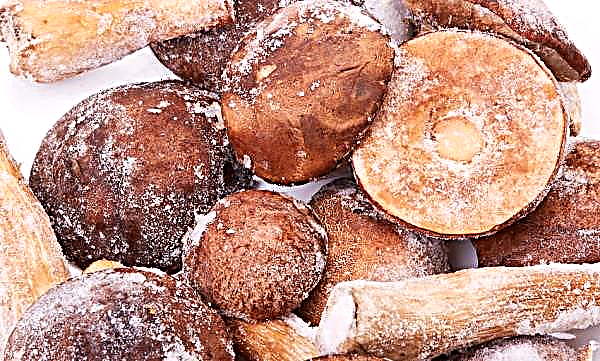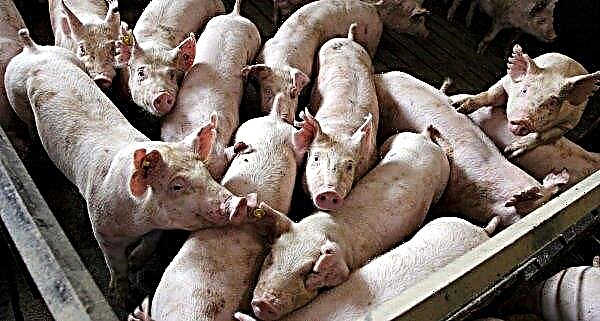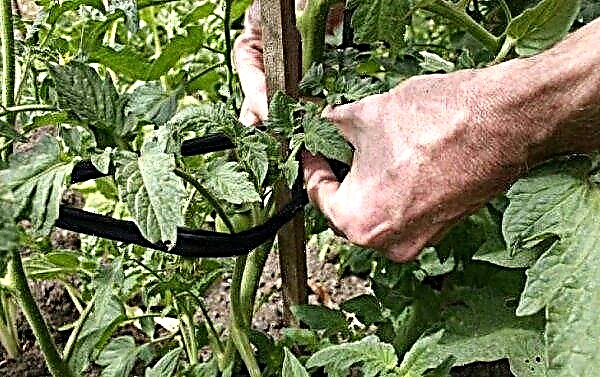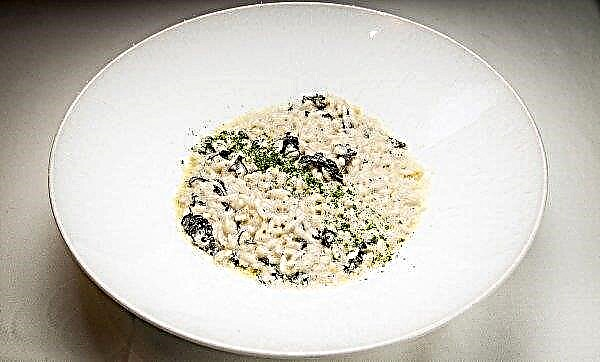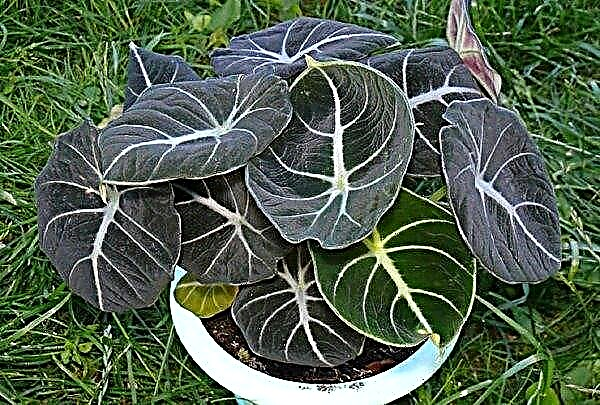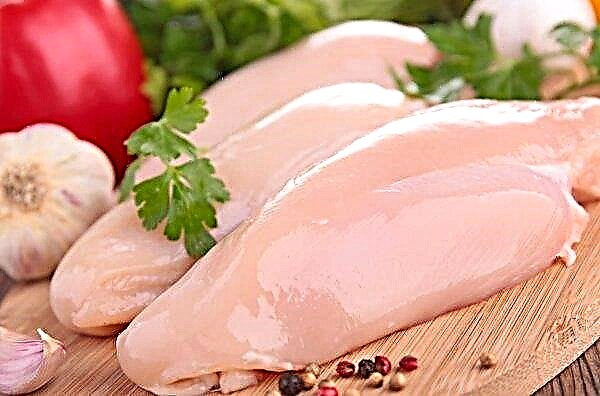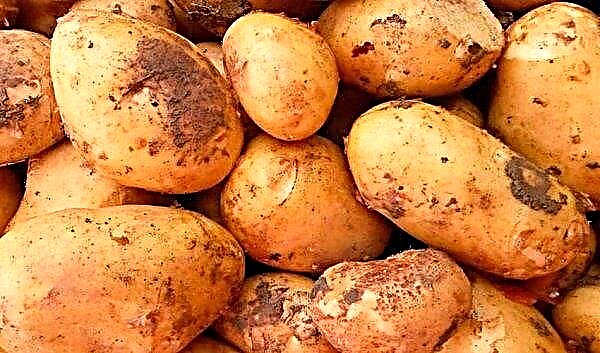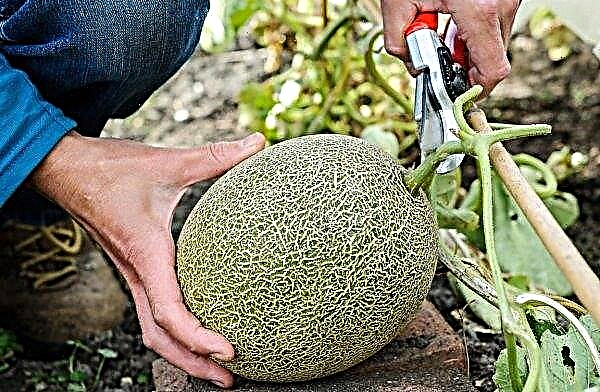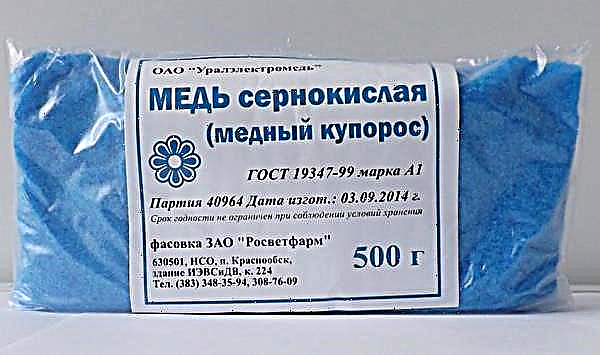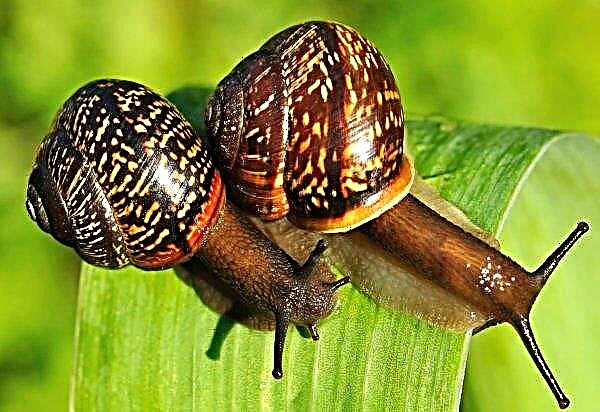Among the usual, widespread garden plants, there are also quite exotic species, such as, for example, Anguria Antilsky. This culture, which came from the distant Antilles, today grows in America and in many European countries, and gradually begins to win fans in our latitudes.
Description of the variety Anguria Antilsky
Anguria Antilles, Watermelon cucumber or Syria Anguria is an annual lianoid plant of the pumpkin family, the fruits of which resemble cucumbers with pronounced thorns. Anguria is used both as an edible vegetable and as a decorative decoration to create tall, dense, bright green thickets. The American Indians were the first to cultivate this plant, and then it spread to other regions and continents.
The South American nature of the plant determines a comfortable temperature for its cultivation - +23 ... + 29 ° С. Unlike ordinary cucumber, Anguria is resistant to most diseases characteristic of such crops.
Bushes
The plant is a tall - up to 5-6 m - lianoid pubescent stems with beautiful curly-carved leaves resembling watermelon. The only difference is the presence of small spikes on the leaves. Anguria Antilsky quickly grows and forms many lateral branches with greenbacks in the internodes.
The plant blooms with numerous fragrant yellowish flowers resembling cucumber. Flowering is observed almost until the first cold weather, and brings a rich harvest.
Due to its active growth, Anguria is often used to decorate the walls of buildings, fences and decorate small arbors.
Important! The plant belongs to dioecious and has male and female flowers, therefore, it requires the help of insects for pollination. You can also do pollination manually.
Fruit characterization
Rasthenia brings small green cylindrical fruits with the following dimensions:
- average length - 8 cm;
- average diameter - 4 cm;
- weight - 30-50 g.
The young fruits of the plant, which are popularly called "hedgehogs", are strewn with numerous soft spines or slight pubescence. They are similar in taste to ordinary cucumbers and are used in raw and pickled form. Moreover, experienced gourmets argue that pickled Anguria is much tastier than salted cucumbers.
Overripe fruits have an orange or red hue and are not eaten, since their spikes become much rougher as they grow. But they are great for creating crafts and souvenirs that can last a long time.

Ripening time
Anguria Antilsky has good fruiting, cucumbers ripen approximately 70 days after the appearance of the first shoots. Thus, in the middle latitude "hedgehogs" can be collected from late June to September. With good care, fruiting will continue almost until frost.
Variety Productivity
For a full season without early cold weather, one plant can bring 70–100 fruits. Only 3-4 bushes, occupying about 10-12 m² of area, will give up to 20 kg of hedgehogs.
To accelerate fruiting, the method of pinching the lateral shoots to the ovary is used. The best method of growing this plant is on trellises, which will become a strong support for its long, branched shoots.
Advantages and disadvantages of the variety
- Watermelon cucumber has the following advantages:
- has a high content of vitamins and minerals;
- does not accumulate nitrates;
- positive effect on the gastrointestinal tract;
- useful for diseases of the heart and blood vessels;
- when consumed, it is not bitter;
- can be used both raw and salted or pickled;
- in comparison with an ordinary cucumber it tolerates a temporary lack of moisture;
- not prone to typical diseases of ordinary cucumbers.
As for the disadvantages of culture, we can only note the impossibility of eating overripe fruits, which are used only for decorative purposes.

Cultivating varieties
Anguria is planted in warm, sunny areas, protected from drafts and strong winds. The culture prefers light and fertilized soils with good drainage. Do not plant plants on acidic soils or areas where groundwater is located near the surface.
Since the bushes curl and have a considerable height, they need support in the form of a wall, fence or trellis.
The best temperature for growing plants is + 25 ... + 26 ° C, lowering the temperature to + 6 ° C and lower leads to their death. In adulthood, plants are better cold resistant, but in the cold season they give only a modest yield.
Important! The successful predecessors of Anguria are greens, early cabbage, legumes and table roots.
Growing seedlings
To get a full crop, this culture is best grown from seedlings.
To do this:
- Select large, high-quality seeds.
- Soak the seed in clean, slightly warm water for a day, you can use a light solution of potassium permanganate.
- Prepare a soil mixture of peat and humus in a ratio of 1: 1.
- Fill one-time cups with a diameter of 8-10 cm with soil and sow 1-2 seeds in them.
- After 25-30 days, transplant the resulting seedlings into the greenhouse.
- When warming the earth to + 10 ° C (end of May - beginning of June), land Anguria on the site.

Seedling Care
Caring for seedlings of Anguria is no different from caring for ordinary cucumbers. Containers with seeded seeds are covered with a film or glass and placed in a room with a temperature of about + 25 ° C.
Watered no more than once every 7-10 days. Watering is carried out with room-settled water so that the soil does not dry out, and the water does not stagnate.
For normal ventilation, cups are placed at some distance from each other. A week later, when two leaves appear on each sprout, the protection is removed and the containers are exposed to sunlight. In this case, it is necessary to ensure that not direct, but scattered rays of the sun fall on the seedlings.
Did you know? The cultivated cucumber we are familiar with came from our wild ancestors, who grew up at the foot of the Himalayan mountains. In these parts you can still meet them in the wild.
To reduce the density of seedlings, at the stage of formation of 2-3 leaves, a dive is carried out.
Transplanting
Depending on the climatic conditions of the area, the planting of seedlings of Anguria Antilsky is made in a greenhouse or open ground.
To the greenhouse
Planting plants in the greenhouse is done when each bush has 5-6 formed leaves. This culture does not like transplantation, so you should be very careful.
It is necessary to cut the cups, remove the bush with a lump of earth, transplant into prepared holes and fill up to cotyledon leaves. Then slightly compact the soil, lightly water and mulch the soil in the root circle.
In open ground
Plants are planted in open ground at a steady day temperature of about + 22 ° C and night temperature not lower than + 18 ° C. Seedlings are planted when each bush has 3-4 mature leaves.
The standard scheme for planting seedlings is 50 × 40 cm. When planting near a building or fence, the distance between the bushes should be increased to 80 cm. In each prepared hole, 2 l of humus and a handful of wood ash should be placed. Then plant the bushes, deepening them to the cotyledons.
In the absence of natural support, on which lashes can crawl, artificial is established.
Did you know? United Arab Emirates breeders thought about the convenience of transporting cucumbers, as a result of which square-shaped fruits appeared.
Care Features
Caring for the bushes of Anguria Antilles is similar to caring for ordinary cucumbers.
Watering
Plants, especially during fruiting, are very fond of water, while reacting poorly to its stagnation. Therefore, watering should be moderate and regular, as the top soil layer dries. For watering, you need to use a little warm, if possible, standing water.
Fertilizers and fertilizers
Once every 10 days, Anguria needs to be fertilized with a solution of mullein (500 g per 10 liters of water) or chicken droppings (250 g per 10 liters of water), or a solution of nitrophoska (2-3 tbsp. Per 10 liters of water). Also, the plant responds well to foliar top dressing, for which mineral fertilizers are used to grow cucumbers (concentration 0.25%).
Also, the plant responds well to foliar top dressing, for which mineral fertilizers are used to grow cucumbers (concentration 0.25%).
Weeding and loosening the soil
Loosen the soil after each watering, which will improve the access of oxygen to the roots of the plant. Also, as weeds appear, weed should be weeded in the root circle. This should be done carefully so as not to damage the roots and stem of the plant.
Mulching of the soil with the use of peat, compost or dry leaves will allow to remove the need for weeding and loosening. It also protects the soil from heat and retains moisture in it for longer.
We recommend reading about other bee pollinated varieties of cucumbers:
Disease Prevention
Although Anguria is resistant to many diseases of ordinary cucumbers, including powdery mildew, prevention should still be taken into account.
Basic measures against diseases and pests:
- compliance with the rules for caring for plants;
- periodic disinfection of all equipment and greenhouses;
- removal of weeds and plant debris from the site;
- digging and loosening the soil;
- removal of rotten or damaged fruits and flowers;
- timely top dressing to maintain plant immunity;
- regular inspection of bushes to identify the first signs of infection.

Features of harvesting and storage of crops
Harvesting this crop is necessary in the early morning, in the cool. This will be the key to collecting strong and juicy fruits that can persist for a long time. It is better to store the crop in a dry and cool place - a cellar or cellar. However, many gardeners note that even at room temperature the fruits of Anguria Antilsky lie well before the New Year holidays.
And although over time their skin becomes a little denser and yellow, the taste of the pulp does not deteriorate at all. Moreover, it becomes even a little sweeter.
If you want to please yourself with an unusual, useful and, at the same time, decorative plant - Anguria Antilsky will be a great choice. She will decorate your site and give a rich harvest of funny and tasty “hedgehogs”.

